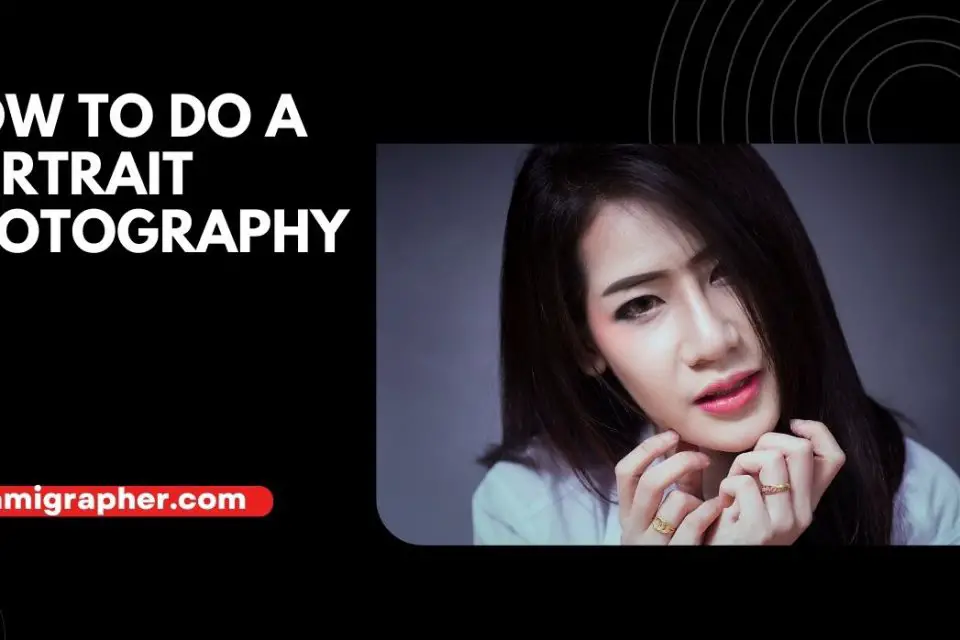“How To Do A Portrait Photography”. Whether you are a professional photographer or just starting out, portrait photography is a great way to show your clients and friends what you can do. In this article, we will provide you with tips on how to do perfect portrait photography and help you to get the most out of your camera.
Contents
Set the stage
If you’re new to portrait photography, or if you’re looking to take your photography skills to the next level, one of the best ways to do that is by learning how to set up and pose your subjects. In this article, we’ll walk you through the basics of setting up a portrait shoot, from choosing your location to positioning your subject.
If you’re already familiar with portrait photography setup, feel free to skip ahead to our tips for posing your subject. But if you want to know more about what goes into making a great portrait, read on!

More related topics.
How To Do A Fine Art Photography
How To Do Aura Photography
How To Do A Double Exposure Photography
How To Do Tintype Photography
How To Do Optical Illusion Photography
How To Do A Portrait Photography
Portrait photography is all about finding your subject and capturing its essence. Here are some tips to help you find the right person for your portrait:
- Look for people who you know well or have a connection with. Subjects that feel comfortable in front of the camera will come across as more natural and relaxed.
- Ask around for recommendations. Queue up a few people you know and ask them who they think would make a great subject for your portrait. People who are willing to give honest feedback will be invaluable in helping you find someone who is truly worth photographing.
- Be open to different types of portraits. There is no one perfect type of portrait, so experiment with different settings and poses to see what works best for your subject.
- Take note of natural light sources and adjust your shooting accordingly. When shooting outdoors, remember to adjust your ISO to compensate for changing light conditions. Likewise, if you’re shooting indoors, take into account the amount of artificial light present to achieve the desired effect.
- Utilize props and accessories to add an extra layer of personality to your portraits. Try using a funny hat or scarf as an accent in your photo, or use a flower as a prop to add some freshness to the image.
Prep your equipment
When photographing a portrait, it’s important to have the proper equipment and settings in order to get the best results. Here are a few tips on how to prep your equipment for portraits:
- Have a sturdy tripod and ball head ready.
- Make sure your camera is properly set up and calibrated.
- Make sure your lenses are sharp and your exposure is correct.
- Choose the right background for your subject.
Capture the moment
When it comes to portrait photography, capturing the moment is key. Here are a few tips to help you capture the perfect shot:
- Choose the right location. A well-lit room with natural light is ideal for portraits. If you have enough space, set up a backdrop or prop to add some interest.
- Get close. When photographing someone closes up, use a wide-angle lens to create a sense of intimacy. If your subject is comfortable with it, ask them to look straight into the camera lens and relax into the pose.
- Take plenty of photos! While it’s important to get the perfect shot, don’t hesitate to take several shots in case something goes wrong. Once you’ve got a few good shots, choose the one that best captures the emotion of the moment.
- Review your photos often. Once you’ve captured an amazing portrait, spend some time reviewing your photos and picking out the best ones for posting online or printing for posterity.
Post-Processing
The post-processing process is the final step in portrait photography. It involves fixing any mistakes that were made during the shooting process, and adding any finishing touches to make the photograph look its best. This includes things like adjusting exposure levels, sharpening images, and adding special effects.
Some common post-processing techniques include:
- Adjusting Exposure Levels
One of the most important steps in post-processing is adjusting exposure levels. This determines how bright or dark a particular area of the photograph appears. To achieve the desired effect, you’ll need to use either a histogram or a light meter to determine the correct exposure level for your image.
- Sharpening Images
Sharpening images can help to improve the clarity and detail in your photographs. This is done by increasing the contrast between the pixels in an image, which makes them appear crisper and more detailed. You can do this manually by using tools such as sharpen or sharpener programs, or you can use automated algorithms to achieve similar results.
- Adding Special Effects
Special effects can be used to create unique and eye-catching portraits. These may include things like distortion, blurring, and color correction. Depending on the effect you’re looking for, you may need to use different tools to achieve it.
Tips for posing your subjects
When photographing people, it is important to know how to pose them correctly in order to achieve the best results. Here are some tips for posing people for portraits:
- Get to know your subject – learn their personality and what makes them unique. This will help you find the right pose for them.
- Know your camera – understand the settings your camera offers and use them to your advantage. For example, using a shallow depth of field will help isolate the subject from the background.
- Use props – use accessories or other elements in the environment to create interesting poses. For example, placing a plant in front of a person can create an interesting composition.
- Use light – use natural or artificial light to add elements of warmth or realism to your portrait.
Composition for portrait photography
There are a few things to keep in mind when composing a portrait, below are tips to help you get started.
- Make sure your subject is in the center of the frame. This will provide balance and symmetry to your photograph.
- Use a background that complements your subject’s color and style. If the subject is dressed in black, choose a white or light-colored background to make the dress stand out. If the subject is wearing colorful clothing, choose a neutral backdrop like a wall or floor to help ground the image.
- Use props or settings to add interest and dimension to your portrait. A vase of fresh flowers can add life and vibrancy to an otherwise static portrait. Try using natural light sources such as windows, candles, or sunlight streaming through curtains for a more flattering effect.
- Take plenty of photos! There is no “right” or “wrong” way to compose a portrait, and the more shots you take, the better your chances of getting a great image.
Conclusion
As a photographer, one of the most important skills you can possess is the ability to take amazing portraits. In this article, we will outline some key tips on how to do portrait photography that will help you create stunning images that capture your subject’s personality and essence.
If you are looking to up your game when it comes to portrait photography, be sure to read through this guide and apply what you learn in your next shoot.
Thanks for joining us! Stay tuned for new updates. camigrapher.com

